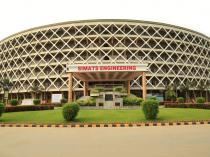Can I get admission to B.Tech at Saveetha University with JEE Main scores?
-
1 Answer
-
The eligibility criteria required for admissions to the BTech course at Saveetha University require candidates to complete their Class 12 with at least an aggregate of 45%, the university accepts the scores of its entrance examinations and according to TNEA counselling. However, according to the information provided on the official website of the university, the acceptance of JEE Main scores for admissions to BTech courses is not explicitly mentioned on the website. Still, it is advisable to reach out to the admission department for this query as according to the unofficial sources available on the internet, there is evidence of accept
...more
Similar Questions for you

Marksheet and Adhaar details must be matched. So you have to approach to 10th passing school with relevant documents. The school will submit the application to CBSE regional office for correction.
With a 300 SC category rank in CAT, your chances for NIT Trichy MBA are relatively high. Based on 2025 data, NIT Trichy generally shortlists SC candidates with CAT percentiles around 60-65. To achieve a 300 rank under SC category, you would need about a 65-70 percentile, or a score of roughly 60-65 marks out of 198 in CAT 2025, depending on difficulty and normalization process. Final selection is also based on interview, academics, and work experience. Yes, you are fairly within touch, but I would encourage you to have a solid overall profile as well to increase your chances of admission.
The sum of a magnetic field that passes through a given surface area is called the magnetic flux. The mathematic formula is? = BA cos (? ).
This chapter covers the concepts of potential, capacitors, and potential energy. It is considered as one of the easy chapter of the class 12 Physics.
It talks about the atom. According to the Greek philosophers earlier, the atoms were the smallest part of matter that cannot be further divisible. Later, Dalton's atomic theory suggested that atom is the ultimate particle of matter. This theory was challenged later on by experiments done towards the end of the 19th and beginning of the 20th century. These experiments found that atoms are made up of electrons, protons and neutrons.
Taking an Exam? Selecting a College?
Get authentic answers from experts, students and alumni that you won't find anywhere else
Sign Up on ShikshaOn Shiksha, get access to
- 65k Colleges
- 1.2k Exams
- 688k Reviews
- 1800k Answers

